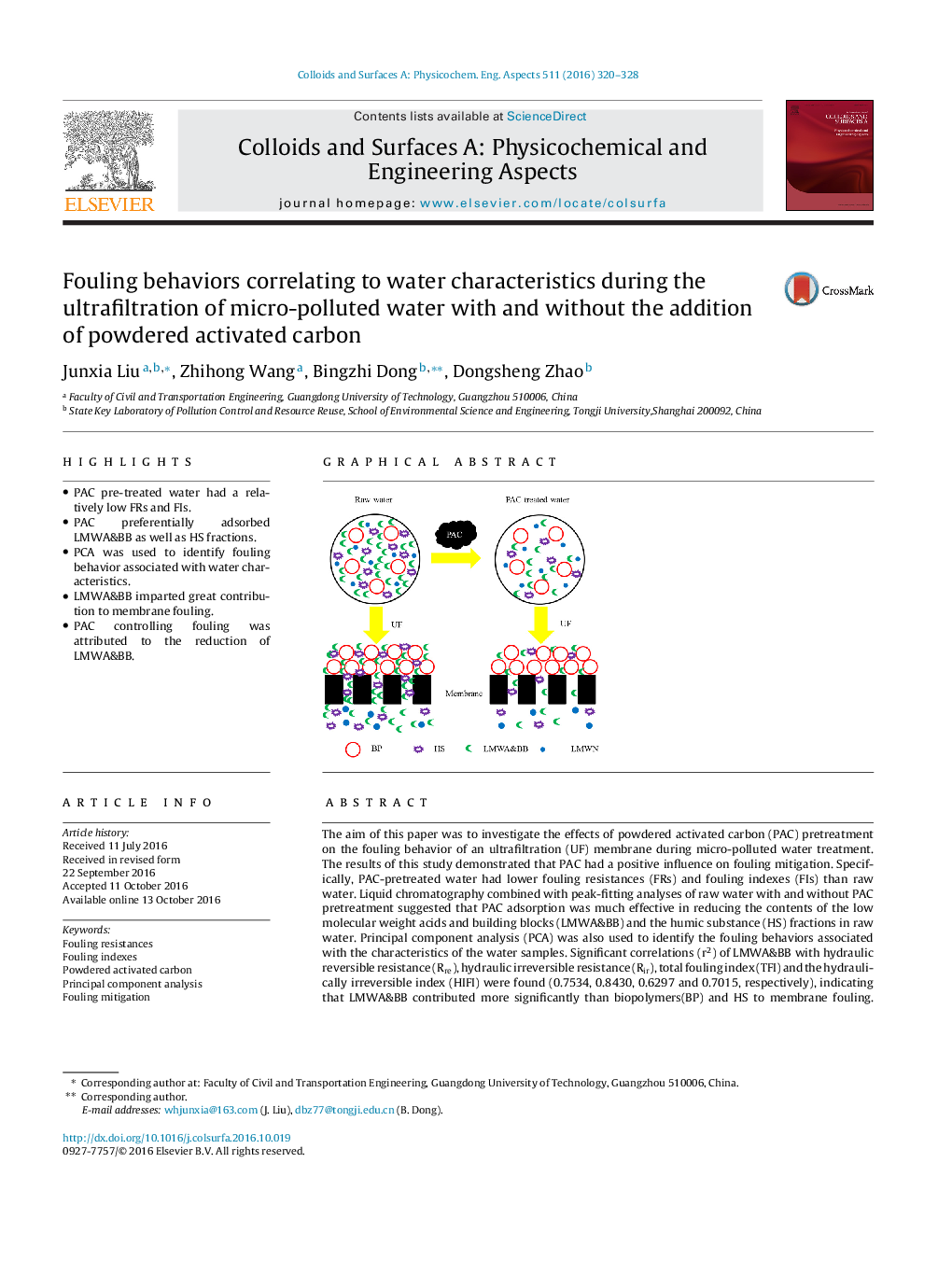| کد مقاله | کد نشریه | سال انتشار | مقاله انگلیسی | نسخه تمام متن |
|---|---|---|---|---|
| 4982495 | 1453862 | 2016 | 9 صفحه PDF | دانلود رایگان |
- PAC pre-treated water had a relatively low FRs and FIs.
- PAC preferentially adsorbed LMWA&BB as well as HS fractions.
- PCA was used to identify fouling behavior associated with water characteristics.
- LMWA&BB imparted great contribution to membrane fouling.
- PAC controlling fouling was attributed to the reduction of LMWA&BB.
The aim of this paper was to investigate the effects of powdered activated carbon (PAC) pretreatment on the fouling behavior of an ultrafiltration (UF) membrane during micro-polluted water treatment. The results of this study demonstrated that PAC had a positive influence on fouling mitigation. Specifically, PAC-pretreated water had lower fouling resistances (FRs) and fouling indexes (FIs) than raw water. Liquid chromatography combined with peak-fitting analyses of raw water with and without PAC pretreatment suggested that PAC adsorption was much effective in reducing the contents of the low molecular weight acids and building blocks (LMWA&BB) and the humic substance (HS) fractions in raw water. Principal component analysis (PCA) was also used to identify the fouling behaviors associated with the characteristics of the water samples. Significant correlations (r2) of LMWA&BB with hydraulic reversible resistance (Rre), hydraulic irreversible resistance (Rir), total fouling index (TFI) and the hydraulically irreversible index (HIFI) were found (0.7534, 0.8430, 0.6297 and 0.7015, respectively), indicating that LMWA&BB contributed more significantly than biopolymers(BP) and HS to membrane fouling. The likely mechanism by which the PAC alleviated fouling was the reduction of the LMWA&BB fraction's presence at the membrane surface and pores. These results suggest that the application of the PAC pretreatment preceding passage through the UF membrane is a promising approach for membrane fouling mitigation.
160
Journal: Colloids and Surfaces A: Physicochemical and Engineering Aspects - Volume 511, 20 December 2016, Pages 320-328
